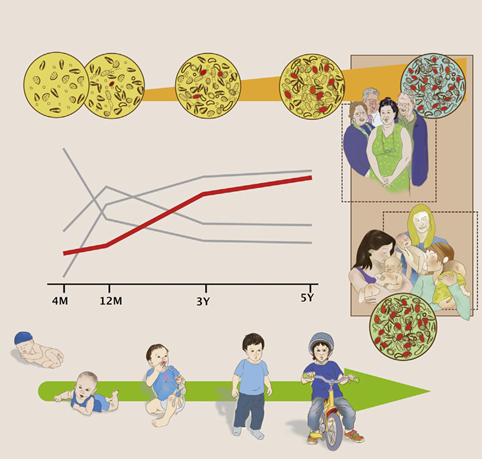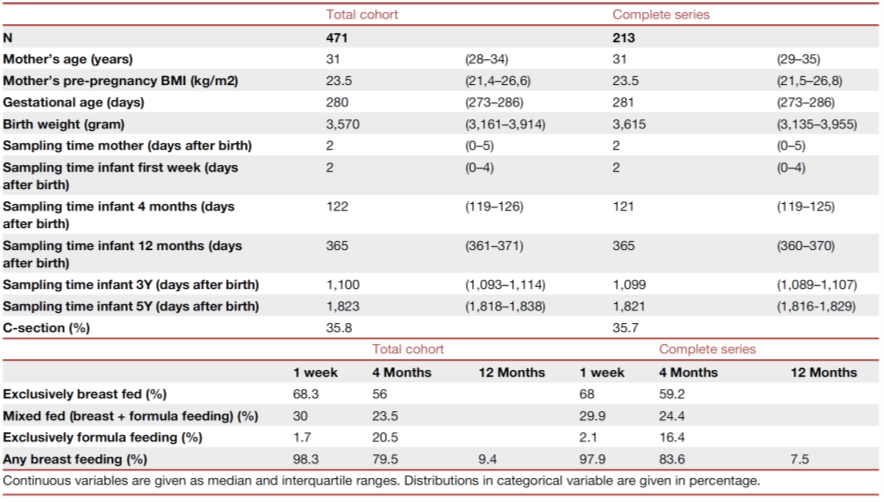2021-04-05 By Quick Biology
Gut microbiota lives in our digestive tracts and is established at birth. Initial research suggests certain bacteria in our gut can prevent and treat many common diseases, such enormous system of organisms’ influences, improves our health conditions. Understanding how population changes or evolves of gut microbiota in our body in development is fundamental, critical, but challenging as trillions of gut bacteria in ~ 1,000 different species in our body.
Although the gut microbiota is so complex, everyone’s microbiota is unique, there are certain bacteria are commonly found in healthy individuals. In recent Cell Host & Microbe, scientists analyze the microbiota from 471 Swedish children followed from birth to 5 years of age, collecting samples after 4 and 12 months, and at 3, 5 years of age as well as from their mothers at birth using 16S rRNA gene profiling (Fig.1, table1, in ref1). By comparing these microbiotas to an adult population, they discover that
- ● Children gut microbiota mature along similar trajectories but at different speeds
- ● Different microbes follow discrete trajectories in the developing gut microbiota
- ● The effect of c-section on gut microbiota is normalized in 3–5- year-old children
- ● The gut microbiota has not yet reached adult complexity in 5- years-old children
This work provides us a longitudinal birth cohort of human gut microbiota data during the first five years of life.
Figure 1: Dynamics of human gut microbiota during first 5 years of life. (ref1)

Table 1: Samples used in trajectory study of human gut microbiota

Quick Biology can assist you with fecal DNA extraction and microbial 16s rRNA, metatranscriptomic and metagenomic sequencing. Find More at Quick Biology.
See resource:
1. Roswall, J., Olsson, L. M. & Kovatcheva-datchary, P. Article Developmental trajectory of the healthy human gut microbiota during the first 5 years of life Developmental trajectory of the healthy human gut microbiota during the first 5 years of life. 1–12 (2021). doi:10.1016/j.chom.2021.02.021



